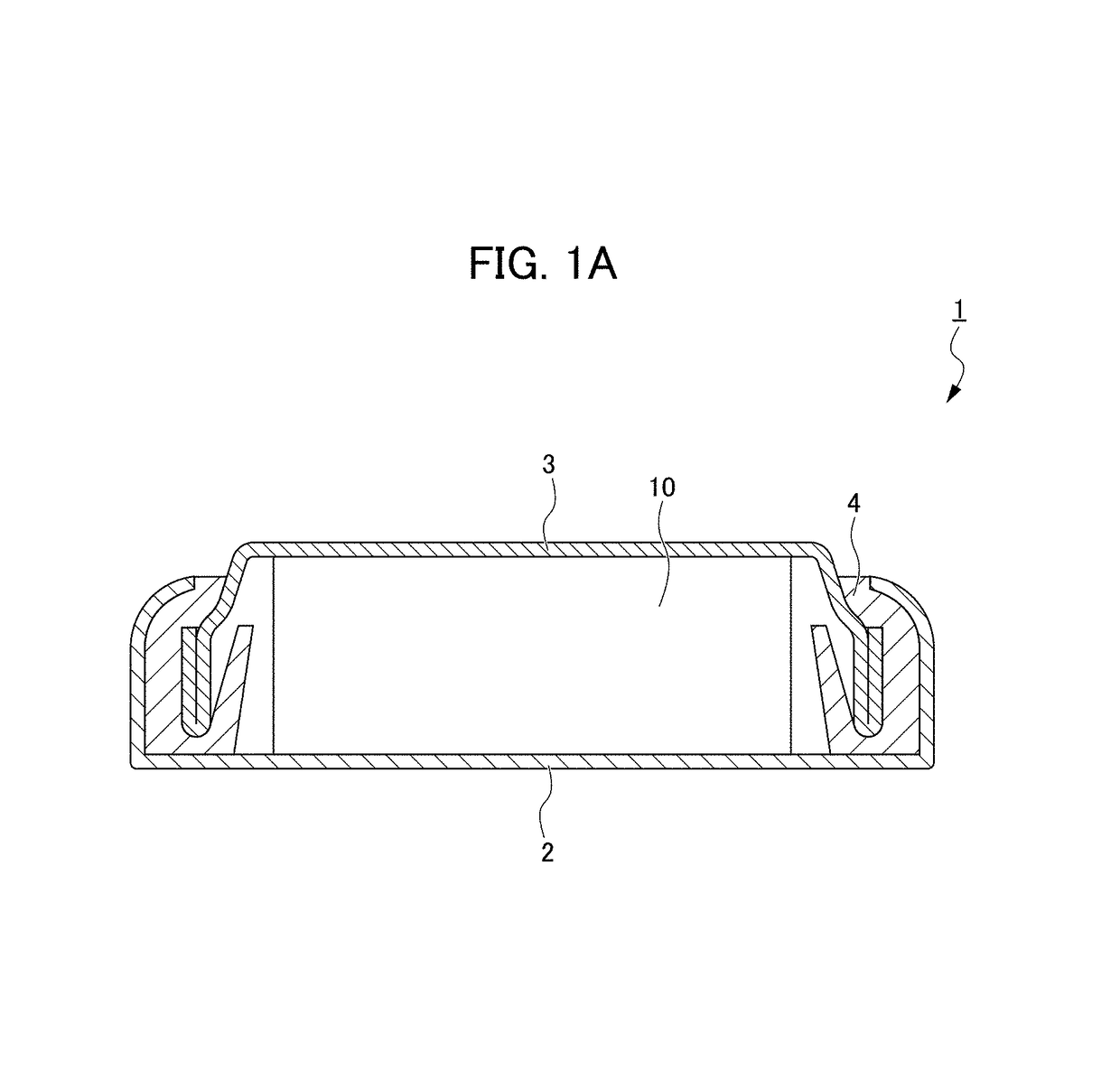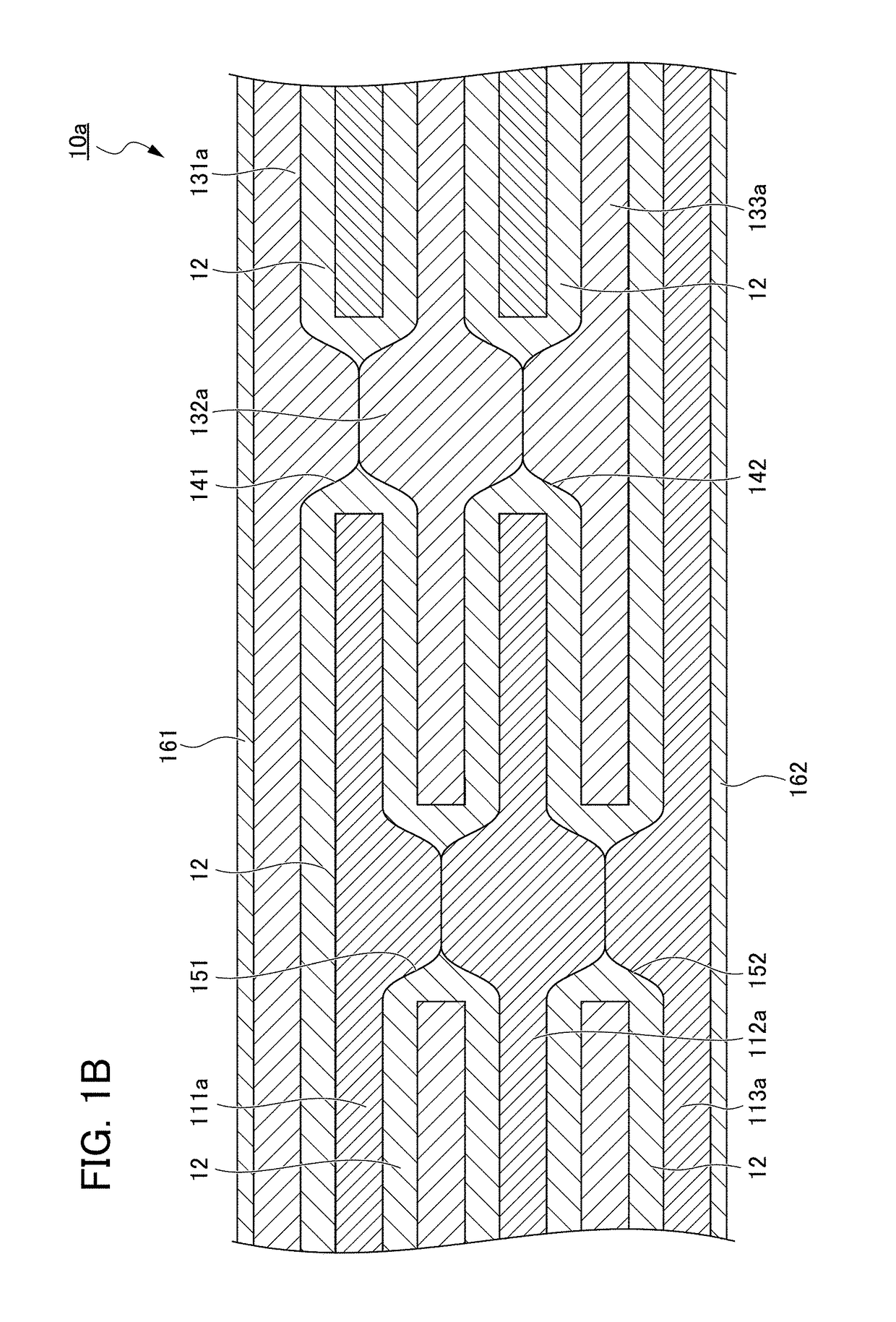All-solid secondary battery
- Summary
- Abstract
- Description
- Claims
- Application Information
AI Technical Summary
Benefits of technology
Problems solved by technology
Method used
Image
Examples
examples
[0110]Hereinafter, the present invention is described with specific examples.
(Preparation of Solid Electrolyte)
[0111]A ceramic electrolyte and a glass electrolyte were used as the solid electrolyte. Li1.3Al0.1Zr1.8Y0.1Si0.1P2.9O12 was prepared as the ceramic electrolyte.
[0112]As raw materials, powders of Li2CO3, ZrO2, Al2O3, Y2O3 and SiO2 were mixed with a H3PO4 solution at a stoichiometric ratio, and thereafter heat-treated on a platinum plate at 1480° C. for one hour. The heat-treated mixture of the raw materials was crushed into grains no greater than 200 μm by use of the stamp mill, which was mixed with φ 2 mm YTZ balls and ethanol, and crushed in a planetary ball mill. The obtained powder was dried to obtain a 1.0-μm (D50) ceramic electrolyte powder.
[0113]Li2O—Al2O3—P2O5 type glass was prepared as the glass electrolyte. The raw materials were weighed so that 50 mol % of Li2O, 9 mol % of Al2O3 and 41 mol % of P2O5 were in an oxide-converted composition and uniformly mixed, which...
PUM
 Login to View More
Login to View More Abstract
Description
Claims
Application Information
 Login to View More
Login to View More - R&D
- Intellectual Property
- Life Sciences
- Materials
- Tech Scout
- Unparalleled Data Quality
- Higher Quality Content
- 60% Fewer Hallucinations
Browse by: Latest US Patents, China's latest patents, Technical Efficacy Thesaurus, Application Domain, Technology Topic, Popular Technical Reports.
© 2025 PatSnap. All rights reserved.Legal|Privacy policy|Modern Slavery Act Transparency Statement|Sitemap|About US| Contact US: help@patsnap.com



